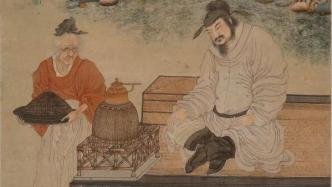
Wuxi is an important tea culture center in the south of the Yangtze River. Since tea saint Lu Yu rated Wuxi Huishan Shiquan as the second spring in the world, the spring tea culture has flourished since then. In the Ming and Qing dynasties, the Jiangnan tea event represented by the Huishan Tea Party has become a cultural symbol with rich humanistic color and is much loved by people. A spring of water has given birth to a grand view of tea affairs that integrates tea poems, tea essays, tea paintings and tea books.
On September 28, the Wuxi Museum's annual special exhibition "Try the Second Spring in the World-Huishan Tea Party Humanity Theme Special Exhibition" opened. The museum displays more than 100 exhibits. Peng Mei News saw at the scene, "Ding Yunpeng Tea Cooking", "Wenjia Erquan Scroll", "Shen Zhou Bishan Yin Club", Ming Yongle blue and white hand-pressed cup with twisted branches and lotus pattern, Qing bamboo tea stove, Qing Chen Ming Yuandong Mausoleum. Star exhibits such as pumpkin pots were all unveiled.
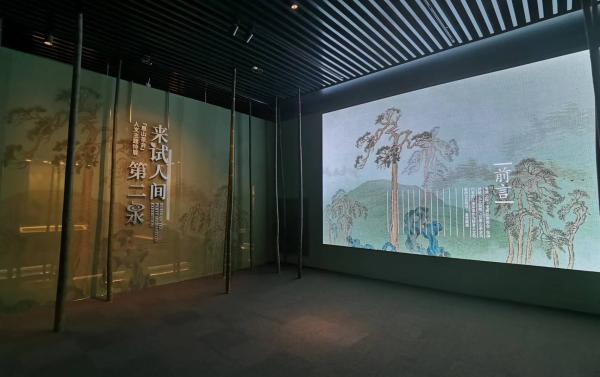
exhibition site
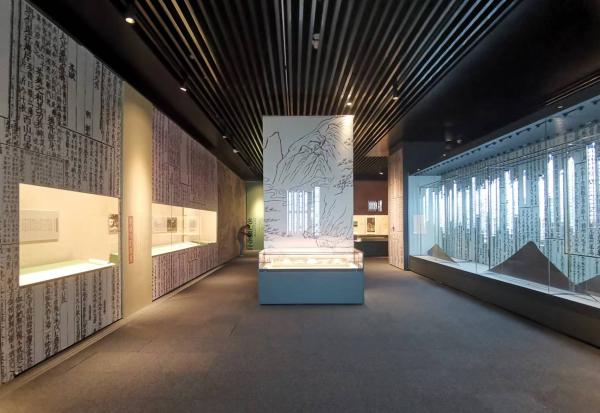
exhibition site
Wuxi is located in the plain of the middle and lower reaches of the Yangtze River, and it is not known for the victory of the mountains. Huishan within its jurisdiction is a branch of the Tianmu Mountains, and the highest peak is only more than 300 meters. However, this ordinary mountain forest stands out in the mountains and rivers in the south of the Yangtze River because of its association with tea, and has become a place where literati of all dynasties wandered and chant.
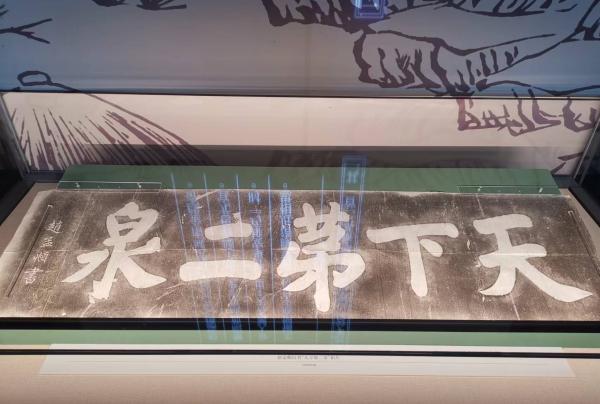
The rubbing of "The Second Spring in the World" by Zhao Mengfu at the exhibition site
Before the Middle Tang Dynasty, although there were poems and prose written by Jiang Yan in Huishan, such as "Guo Lishan", they did not attract much attention from the world. It was not until the visit of tea saint Lu Yu that Huishan became famous. Lu Yu was fond of tea all his life, and was proficient in the tea ceremony. In the middle of the seventh century, Lu Yu came to Huishan and wrote the travel journal "Huishan Temple". He assessed 20 kinds of spring water in the world, and identified Lushan Kangwanggu cave curtain water as the first, and Wuxi Huishan stone spring as the second. The spring is a fissure spring, soaked by pine roots, washed and filtered by Qianyan, and it is sweet and delicious. Therefore, later generations called Huishan Spring as Lu Ziquan, also known as the second spring in the world.
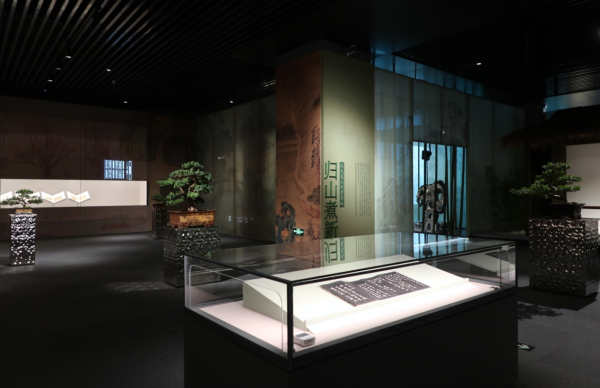
exhibition site
The title of the exhibition theme "Let's try the second spring in the world" comes from Su Shi's poems. The great writer Su Shi is open-minded and sincere. He is not only an all-round art master, but also a gourmet. Su Shi once had a tea battle with Cai Xiang, another calligrapher and tea expert, and Cai Xiang won the victory with the second spring water in Huishan. Since then, the second spring water in Wuxi has become a lingering dream in Su Shi's heart. Between November of the sixth year (1073) and May of the seventh year (1074) of Emperor Shenzong of the Song Dynasty, when Su Shi served as a judge in Hangzhou, he came to Huishan twice to pay homage to the Taoist Qian, and could not wait to bring the imperial tribute tea to Wuxi Hui. Mountain test two springs. After drinking this cup of tea, I was instantly enlightened, and I recited a poem, "Bring the little moon in the sky alone to try the second spring in the world". Since then, Su Shi has been obsessed with Erquan Water, which is repeatedly mentioned in his poems.

Wen Jia "The Second Spring in the World"
After the second spring in the world and the Huishan tea party became famous all over the world, tea guests of all dynasties came from thousands of miles to draw the water from the second spring. In this exhibition, Wen Zhengming's second son Wen Jia's "The Second Spring in the World Scroll" can give a glimpse of the places where people in Wu Diya visited and traveled at that time. Wen Jia depicts the actual appearance of the second spring. The shape of Erquan in the middle and late period is almost the same as what we see now, divided into upper pool, middle pool and lower pool. Wen Jia is colored as a little green, the brushwork is loose and firm, the dyeing is delicate, and the painting environment is secluded. Inscription: "The second spring in the world, written by Wenjia Maoyuan on March 3, Xinsi, Wanli." Wenjia was eighty-one years old in the year of Xinsi, Wanli (1581), so he works in his later years. After the two springs, there is a seven-character "Feng Xie Hui Shan Spring Poem" written by Li Mengyang in regular script.
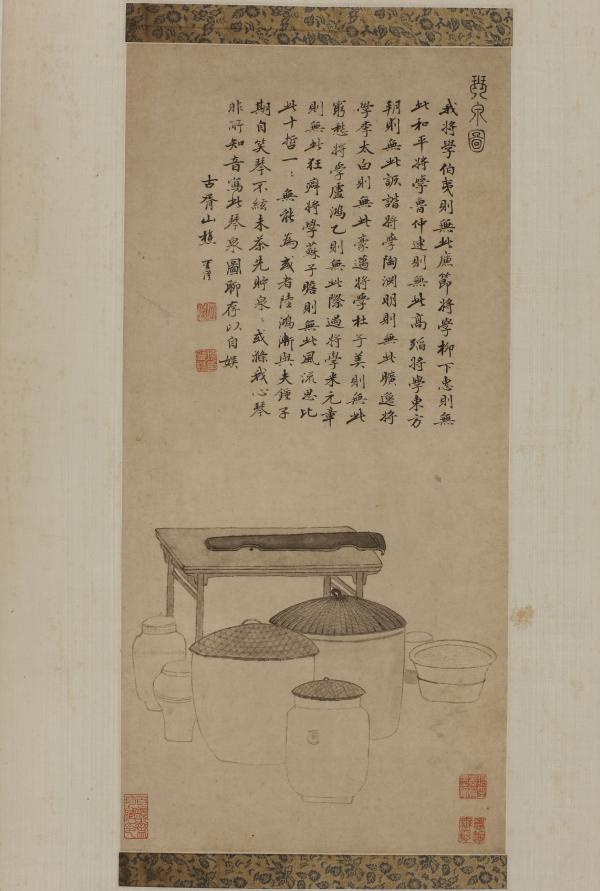
Ming Xiang Shengmo's "Qinquan Chart Scroll"
A "Qinquan Scroll" by Xiang Shengmo of the Ming Dynasty depicts the way of storing spring water. Huishan Spring was very popular for Yi tea and became a precious gift given by people at that time. People transport Huishan Spring in clay pots. Because it is not easy to transport spring water, many methods of transportation and preservation have been summarized. Song "Recording the White Crane Spring" contains: "Huishan is the rush of the two Zhejiang, and the scholars and officials keep baby bottles to seal the bamboo nets, stain small stones, commit heavy rivers, travel thousands of miles, and reach the capital." Song people " Put small stones in it", keep the spring water fresh by placing small stones in it. In addition, there is another kind of sand washing and fresh-keeping method. Zhou Hui's "Qingbo Magazine" stated that Huiquan "can go to Biandu even after the age of the year, but the bottle is still full of gas. ." That is to filter the water with fine sand to remove its dust and odor.

Ming Shenzhou "Bishan Yin Club"
Shen Zhou, a painter and calligrapher of the Ming Dynasty, had two trips to Huishan in Wuxi. For the first time, accompanied by his friends Qin Kui and Li Yingzhen, Shen Zhou paid homage to Zhou Wenxiang Temple and Hua Xiaozi Temple respectively, visited the reading platform and stayed at Tingsong Temple.
In 1482, Qin Xu, the father of Qin Kui, advocated the establishment of "Bishan Yin Club" in Huishan. ." This literary society formed spontaneously by local folk scribes has become famous in the south of the Yangtze River since its establishment. When the Yin Society was launched, it consisted of ten "Sven elders", and Qin Kui was not included because he was in Wuchang. Qin Xu has strict standards for the people who join the Yin Club, and he organizes and organizes elegant gathering activities on a monthly basis. For each event, the organizer will set up a proposition, and the members will compose poems accordingly. The establishment of Bishan Yin Club has added a new cultural landscape to Huishan. When the Bishan Yin Society was established, although Shen Zhou did not come, he heard about it, and was invited by the Qin family to paint a portrait of the "Ten Elders of Liangxi" as a souvenir.
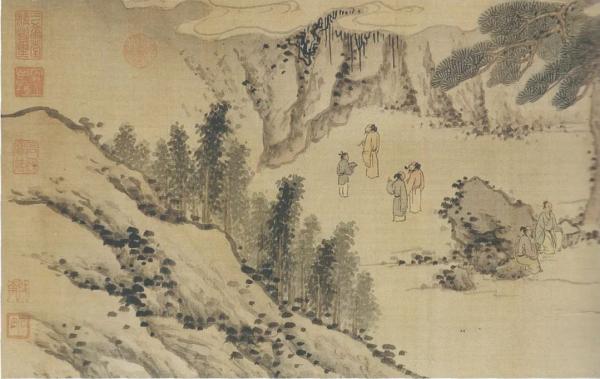
"Bishan Yin Club" (detail)
The portraits drawn by Shen Zhou for the ten elders of the Yin Society may have been copied and circulated many times later, and the "Bishan Yin Society Map" now in the Capital Museum may be one of them. In the second half of the scroll, the painter depicts the elders who are reciting poetry and music in a classic elegant style. And the environment they were in was carefully depicted. From the iconic Erquan Pavilion and Spring Pond at the front of the scroll, the Maolin Xiuzhu that also appears in Shen Zhen's paintings, and the lush mountains in the distance, all remind the viewer that this is Huishan.

Exhibition site "Send Changyuan Dharma Post"
In the "Jichangyuan Dharma Post" engraved by the descendants of the Qin family, we can still see the inscription he wrote for this picture. In the inscription and postscript, Shen Zhou compared Qin Xu with Hui Yuan, an eminent monk from Donglin Temple who founded the Lushan White Lotus Society in the Eastern Jin Dynasty—just as they had hoped when they went on a night tour with Qin Kui in Huqiu, the wish to form a human state finally came to the fore. Hyesan made it happen.
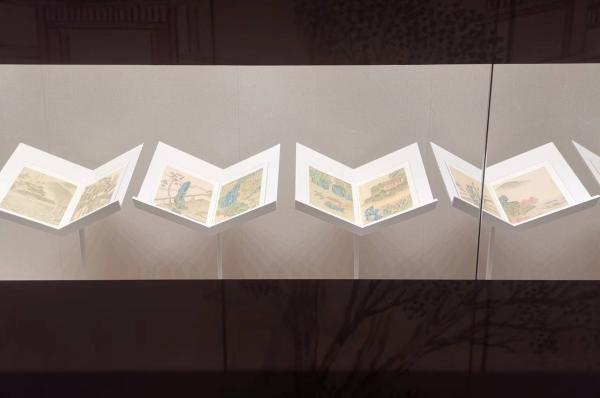
Exhibition site "Fifty Scenes of Jichang Garden"
Ganquan Lingliang, mountain forest and valley, since Zhan Ting built Lishan Thatched Cottage in the foothills of Huishan Mountain in the Southern Dynasties, there were many people who built houses around the mountain in the past dynasties. Jiangnan scenery perfectly integrated with nature.
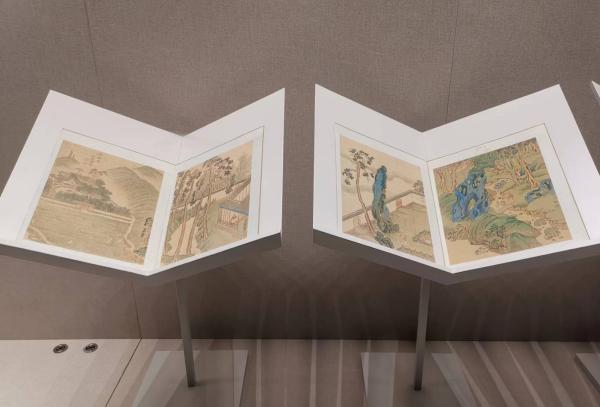
Exhibition site "Fifty Scenes of Jichang Garden"
This exhibition uses the entire central hall of the exhibition hall to display "Fifty Scenes of Jichang Garden" by Song Maojin, a painter of the "Songjiang School" in the Ming Dynasty. This album depicts the fifty scenes of Jichang Garden in Wuxi. Outside the painting is a panoramic view, there are a total of 49 scenes in the park. Jichang Garden is located at the foothills of Mount Huishan in the western suburbs of Wuxi City, adjacent to Huishan Temple. Also known as "Qin Garden", the site of the garden used to be two monastic houses in the Yuan Dynasty, named "Nan Yin" and "Retting Apartment". During the Zhengde period of the Ming Dynasty, Qin Jin, who used to be the minister of military affairs in Nanjing, purchased the "retting apartment" and expanded it. After Qin Jin's death, the garden was renamed "Jichang Garden" by his descendants.
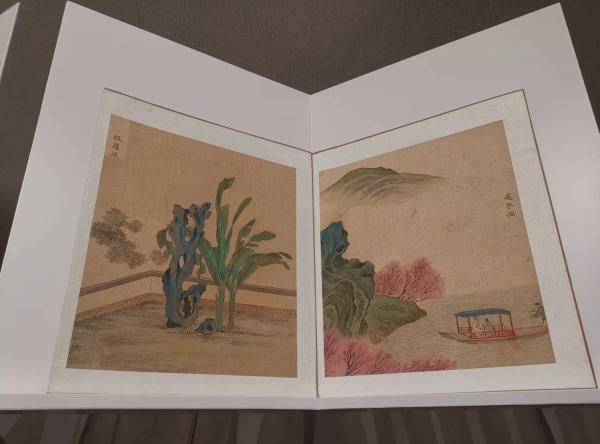
Exhibition site "Fifty Scenes of Jichang Garden"
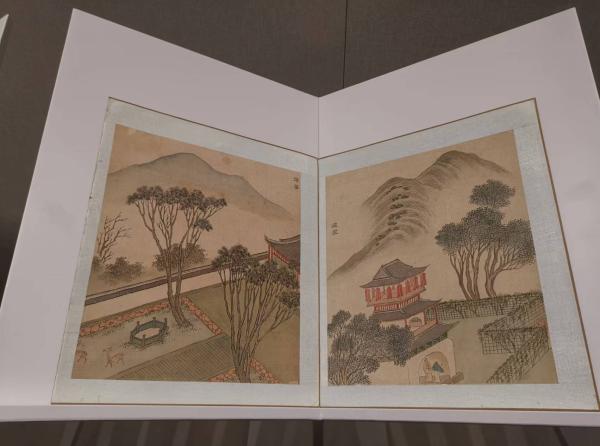
Exhibition site "Fifty Scenes of Jichang Garden"
At present, the Jichang Garden we have seen is an overview of the late Qing Dynasty and the Republic of my country. After 1949, the Chinese government has successively restored the Jichang Garden. The pattern is different from that of the Ming Dynasty. From the paintings of Song Maojin, we can get a glimpse of the appearance of the Jichang Garden in the Ming Dynasty.
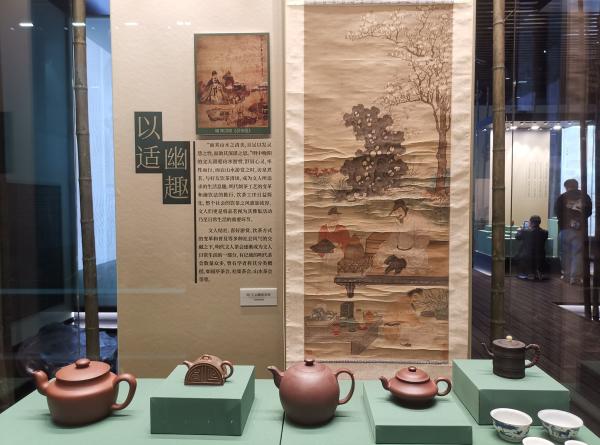
Ming Ding Yunpeng's "Painting of Tea" exhibition site
Ding Yunpeng's "Boiled Tea" in Ming Dynasty is also an important collection of Wuxi Museum. The work was created in the early and middle period of Ding Yunpeng. In this work, a literati cooks tea in a bamboo stove under a magnolia tree, which is very literati and extremely elegant.
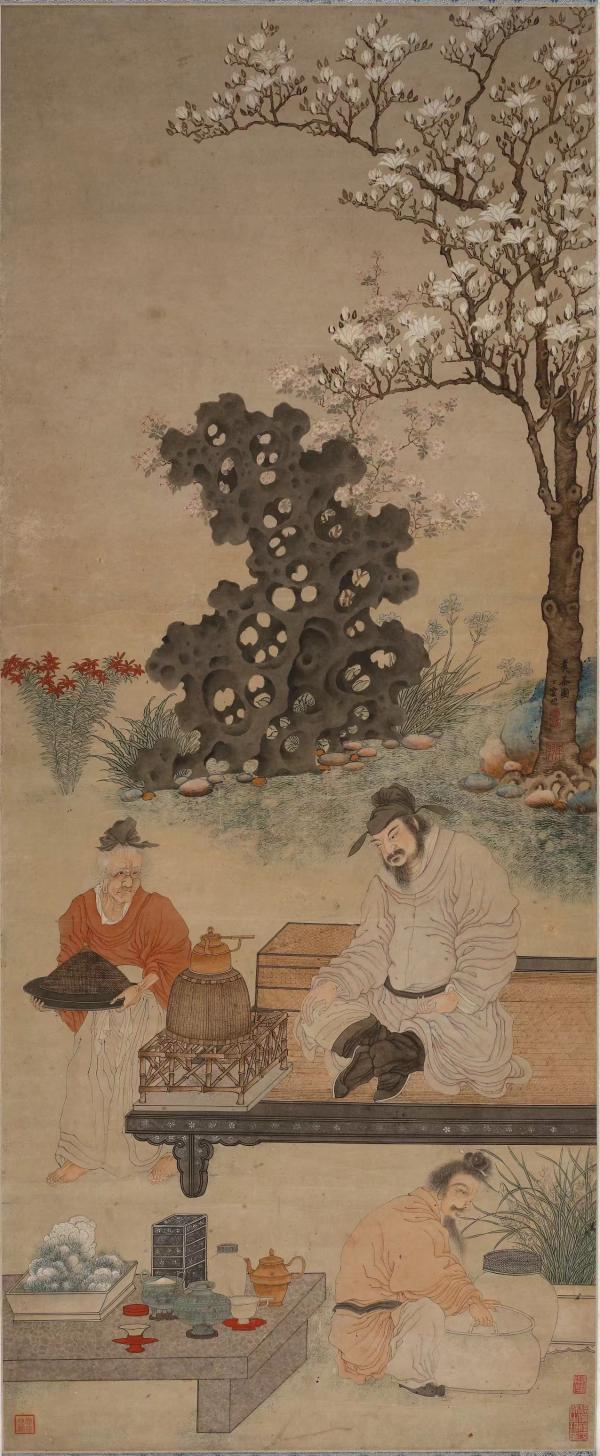
Ding Yunpeng's "Painting of Tea"
In the painting, the protagonist is sitting cross-legged with fingers pinched with his left hand, bowing his head in contemplation, waiting for the tea to be finished. An old woman and a middle-aged servant are busy making tea. The bamboo stove in the painting is round on the top and square on the bottom. The stove body is woven with bamboo skins as bamboo stripes, the stove mouth is round, and the stove below is a hollow square. The description below is the same.
Tang Yin, a talented man of the Ming Dynasty, was fond of tea all his life, and he painted many tea paintings, such as "Picture of Cooking Tea", "Picture of Tasting Tea", "Picture of Tea", "Picture of Qin Shi" and so on. Among them, "Shi Ming Tu" can be regarded as a masterpiece among the existing tea paintings. In this exhibition, a piece of "Hongli Copying Tang Yin's Tea Scroll" from the Palace Museum is displayed.
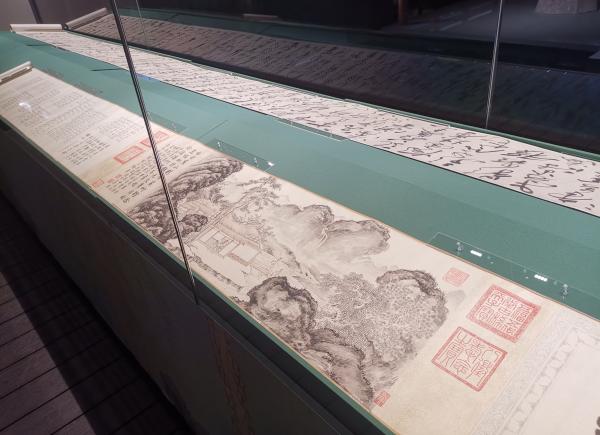
Exhibition site "Hongli Copying Tang Yin's Tea Scroll"
In the original painting, Tang Bohu inscribed himself: "What does the sun grow, and the tea bowl is held by itself. It is expected that under the south window, the breeze is full of silk. Wu tends to Tang Yin." "Shiming", surnamed Chen, is Wang Chong's friend and neighbor, and has a close relationship with Tang Yin. Tang Yin used Chen's name as the title to make this picture, and embedded the word Shiming into the poem. The layout of the original picture is innovative, with clear layers, and the virtual and the real coexist. Close-up boulders stand on the side, the ink color is thick black, and the rubbing is delicate. The house behind the stone is elegant, and the owner of the house is drinking tea by the window. In the original work, there is an inscription in Qianlong's imperial pen: "I remember that in Huishan Jingshe, the bamboo sewer was turned into a green tea cup holder. Jie Yuan's writing and leisure are similar, and quenching thirst and labor. It is raining in April in Jiaxu, and I occasionally show this in my spare time. The volume, because of copying its meaning, is to use the original rhyme in the volume to inscribe it, and write it here. Royal pen." Qianlong's copying level is good, and many scholars believe that there may be painters involved.
The exhibition also displayed many tea utensils, such as the bamboo tea stove from the Palace Museum, the Yongle blue-and-white hand-pressed cup with tangled branches and lotus pattern from the Ming Dynasty, and the Chen Ming Yuandongling Pumpkin Pot from the Nanjing Museum.
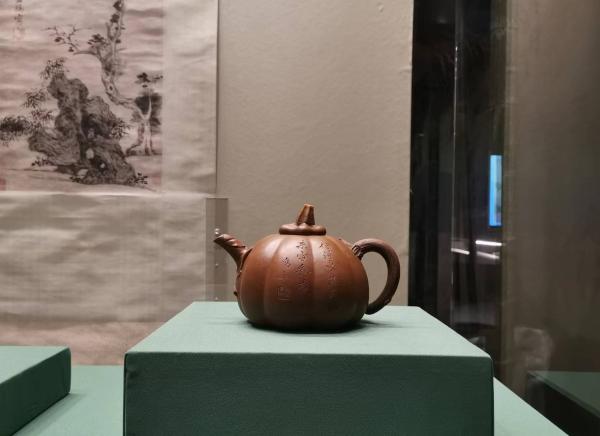
Exhibition site of Chen Ming Yuandong Mausoleum Pumpkin Pot in Nanjing Museum
From 1684 to 1784, Kangxi and Qianlong visited Huishan 14 times. Qianlong highly respected Huishan, and he had already admired the bamboo tea stove during his southern tour. The bamboo tea stove was created by monk Xinghai, a high-ranking monk in Huishan Temple of Ming Dynasty. In the twenty-eighth year of Hongwu (1395), monk Xinghai asked Huzhou Bamboo Workers to make a bamboo tea stove for cooking spring tea. Qiankun pot. It is made of bamboo furnace, and it is made of two springs, sweeping the pine and cooking it on a live fire. It is full of interest and arouses the wide interest of scholars. Wang Fu, a native of Jiulong Mountain, wrote poems for the bamboo furnace. Wang Da wrote it, and celebrities sang together. It became a grand event in Huishan in the Ming Dynasty. After more than a hundred years, the bamboo furnace was lost in circulation.
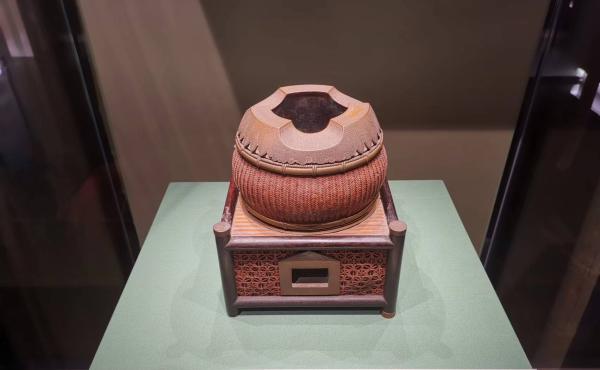
Clear out the tea stove exhibition site
Qianlong visited Wuxi for the first time, that is, "when he sipped in the bamboo furnace mountain house, he did not pay attention to the antiques in the case, but in the ancient bamboo tea furnace, he played with it again and again", and later ordered Wudi bamboo workers to imitate them and bring them back to Beijing. According to the records of the Qing Palace, Qianlong ordered at least 20 bamboo tea stoves for his various tea rooms, which were originally stored in the Chonghua Palace of the Forbidden City.

Ming Yongle blue-and-white hand-pressed cup with tangled branches and lotus pattern in the collection of the Palace Museum
The hand-pressed cup is a new type of porcelain cup created by the Jingdezhen Royal Kiln Factory during the Yongle Period of the Ming Dynasty. According to the information, there are only 4 pieces in the collection of the Palace Museum in the world.

exhibition site
The bamboo stove tea party, which has lasted for hundreds of years, brings together scholars from the south of the Yangtze River to enjoy tea around the stove, relax their spirits, and lead a generation of tea drinking fashion. Today's tea event is being reconstructed in a form of blooming flowers, but no matter how it changes, it still carries that elegance and calmness, and still satisfies each of us's yearning for a better life.
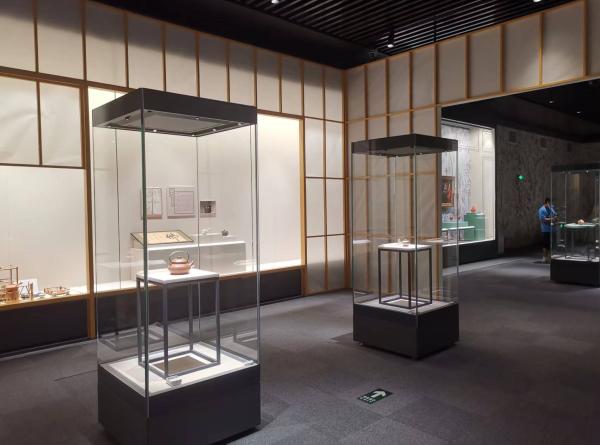
exhibition site
It is reported that the exhibition will last until January 4, 2023.